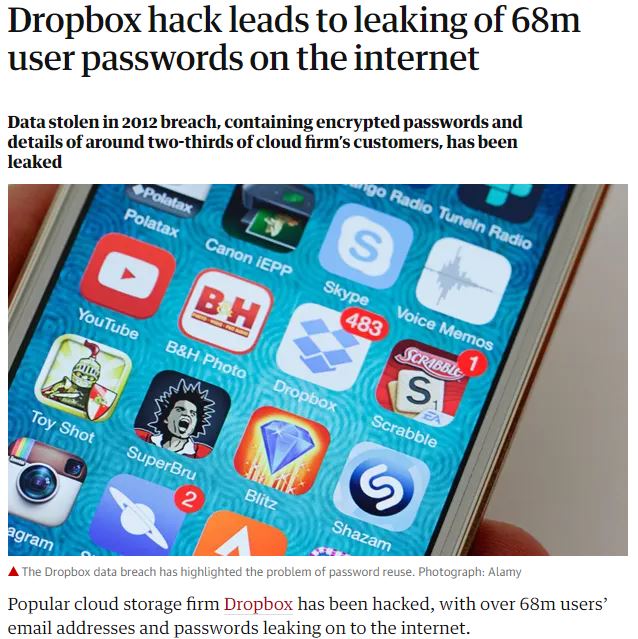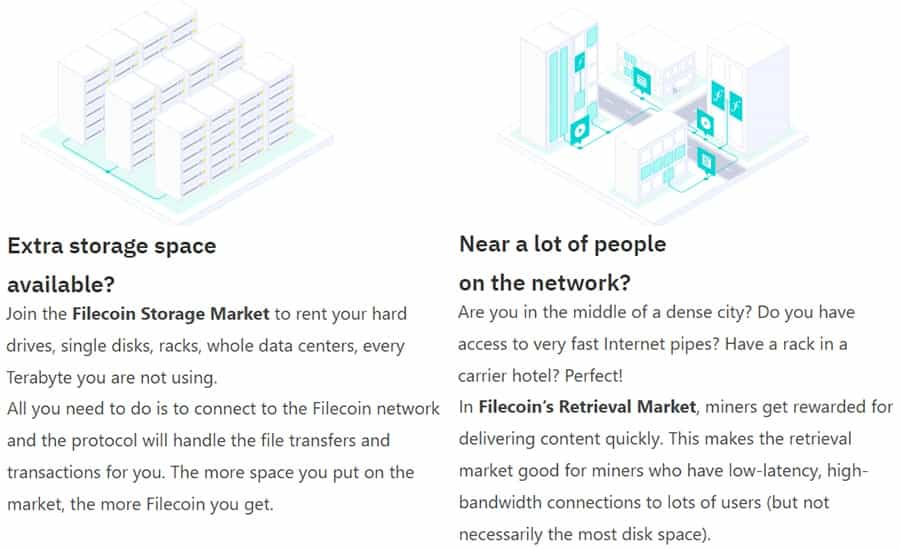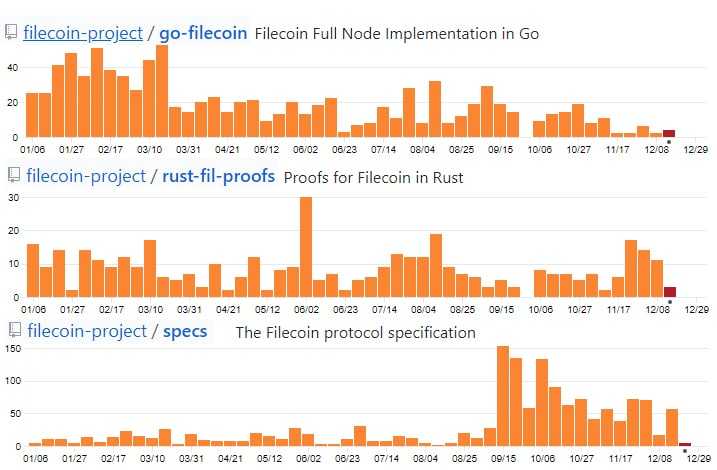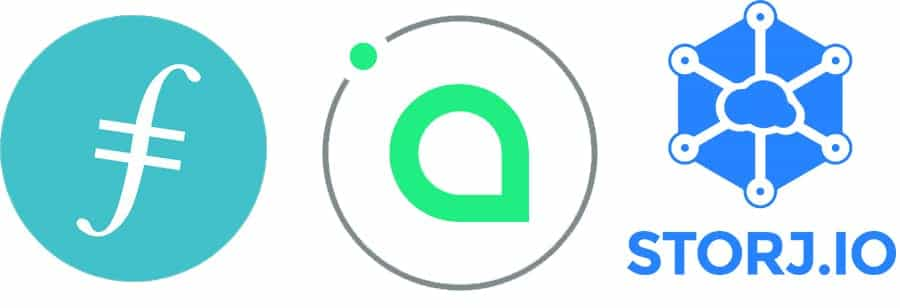Filecoin Review: Decentralised Blockchain Based Storage Network
You may be forgiven for forgetting about Filecoin, the $257 million mega ICO of 2017. However, this project is silently making development strides.
This decentralised file storage blockchain is looking to shape up the status quo of centralised web servers and storage providers. It has also just recently released its much awaited testnet and is shaping up for a mainnet launch in 2020.
So, will Filecoin really meet up to its expectations?
In this Filecoin review, I will attempt to answer that. I will take an in-depth look into the use cases, technology and long term project potential.
What is Filecoin?
Filecoin is a decentralized data storage protocol that will allow anyone in the world to rent out their spare hard drive storage space. And of course, it will also permit anyone in the world to purchase the storage they need from the network.
This will create an immense pool of global data storage, which the founders of Filecoin feel is necessary for the coming decades as more and more systems become computerized and as storage needs grow exponentially.

The project was the brainchild of Protocol Labs and its founder Juan Benet. This is the same company and individual who is behind the Interplanetary File System (IPFS). Not unsurprisingly, this is the same technology that the Filecoin Blockchain is built on.
Given that the data will be stored on a blockchain, not only will it be distributed but it will be immutable. This means that no one can tamper with the data and Proof-of-Storage is immediately verifiable for everyone to see on the transparent ledger.
Filecoin is also known for another really important record: it was one of the largest ICOs ever. The project managed to raise a total of $204 million from contributors who bought SAFT agreements in the 2017 raise - I will cover this a bit more below.
Now that you have a basic understanding of what Filecoin is, let's take a look at the reasons why we need decentralised alternatives.
Need For Decentralised Storage
There are many different ideas that have given rise to blockchain projects. For some reason using blockchain technology for cloud computing and data storage hasn’t been given as much attention as they deserve.
The likely reason is that data storage just seems boring, and projects with more hype have taken the spotlight from utility projects like Filecoin and its competitors Storj and Siacoin. Yet decentralized storage has many benefits over its centralized counterparts.
One of the most mentioned benefits is the safe storage of private data offered by decentralized blockchain storage solutions. The popular centralized storage solutions from the likes of Dropbox and Google are vulnerable to attacks.

If a hacker can break through the security perimeter of one of these centralized networks they can access all of the data stored there. Much of that data can be sensitive and private in nature, including financial details, passwords, and other personal data. Because the theft of this data can become dangerous it is critical to protect it the best way possible.
And the best way possible is by storing such data on a decentralized blockchain solution like Filecoin. It takes data stored and first encrypts it before breaking it into smaller chunks and storing them in multiple nodes.
Only the person who holds the private key can reassemble all the pieces to view the data in its entirety. Any potential errors in the storage and reassembly of the pieces are handled through redundancy of storage on the nodes.

Decentralized data storage will also increase the efficiency of storage, which will lead to reduced storage costs. Consider that Amazon S3 charges $25 per terabyte per month, but Filecoin should be able to reduce that to around $2 per terbyte per month. Decentralized networks can lower costs so dramatically because they don’t have the running costs of centralized networks.
Other benefits are that data transfer will be both smoother and faster. And finally, Filecoin includes its currency layer, which provides incentives for storage nodes and data retrieval.
Filecoin Technology
Filecoin was among the first blockchain projects to introduce the concept of a decentralized storage network (DSN). A DSN is a data storage scheme that includes a network of independent storage nodes and clients. The DSN aggregates the storage offered by the independent node operators, and coordinates the storage and retrieval of the data.
The aggregation and coordination is decentralized, which removes the need for trusted third parties. Instead, security is achieved through the operating protocols which coordinate operations and verify the data storage and retrieval.
Consensus Mechanisms
Filecoin has created two new consensus algorithms to make their storage system publically verifiable. These are Proof-of-Replication (PoRep) and Proof-of-Spacetime (PoSt).
Proof-of-Replication (PoRep): This is a new Proof-of-Storage algorithm that allows a server (or node) to convince a user that it has replicated some data in its physical storage.
In the Filecoin system, the server also commits to store x number of replicas of the data, and then convinces the user that it is storing each replica of the data via a challenge/response protocol. PoRep improves on prior schemes by preventing Sybil attacks, Generation attacks, and Outsourcing attacks.

Proof-of-Spacetime: In a Proof-of-Storage scheme a user can check if the storage provider is actually storing the expected data at the time a challenge is issued. However, it doesn’t verify that the data remains stored across a given period of time.
One way to accomplish this would be to repeatedly challenge the storage provider. Of course, this introduces a huge amount of complexity and communication, and would become a bottleneck to the Filecoin system since storage providers must submit their proofs to the blockchain network.
Proof-of-Spacetime bypasses this by allowing a verifier to check If a storage provider is storing requested data over a range of time. It accomplishes this by requiring the storage provider to:
- generate sequential Proofs-of-Storage (in our case Proof-of-Replication), as a way to determine time;
- recursively compose the executions to generate a short proof.
PoSt and PoRep both use zk-SNARKS, making proofs very short and easy to verify.
IPFS
As mentioned, protocol labs is also behind IPFS. This is a decentralised Peer-to-Peer storage protocol that was launched in 2015. IPFS allows users to store their files across a network of computers in much the same way that BitTorrent does.
Basically, IPFS indexes each file on the network with a fingerprint or "cryptographic hash". This means that the files are unique and only is effectively able to split it up and distribute it in such a way that it is most able to latency - serving files quicker than centralised systems.

IPFS is not just a concept and there has been a great deal of adoption across the world for the technology. Over 5 billion files have been added to IPFS and this spans a number of industries. There are also a number of blockchain companies that are using this tech including Wings, AdEx and DigixDAO.
Smart Contracts
Smartcontracts were included to allow users to access stateful programs which allow for the validation of storage proofs, request storage and retrieval of data, and spend tokens.
The smart contracts are triggered by certain transactions sent to the ledger. Filecoin has extended the smart contract system to include its own blockchain specific operations such as proof of verification and market operations.
Cross-chain Interactions
While not fully implemented yet, Filecoin’s developers are working on support for cross chain interaction through the use of bridges. This will allow other blockchains to utilize the Filecoin storage system while also allowing Filecoin to benefit from the functionalities of other blockchain platforms.
Mining on Filecoin
Once the Filecoin mainnet is live users will have the opportunity to earn FIL tokens by providing data storage and retrieval services to users across the global network.
The more data that a miner stores, the greater their storage power becomes. By increasing storage power the miner increases the likelihood of generating new blocks and winning block rewards. Miners get to choose if they want to participate in storage mining, retrieval mining, storage power consensus, or all three.
Mining on Filecoin is different from mining on a Proof-of-Work blockchain because Filecoin mining is based on storage power consensus rather than raw computing power. That means the more proven storage you have on the network, the more likely you are to win block rewards.

The storage power is linear with respect to the amount of storage added to the network by each miner. The amount of GPUs does not determine the likelihood of winning block rewards. This is in contrast with a Proof-of-Work blockchain where miners all compete on GPU power to win block rewards.
The Filecoin miners only use GPU power during the ElectionPoSt, and only if they have winning election tickets. In short, the cheapest way for a miner to gain power on the Filecoin network is by adding more useful storage to the network.
It is possible to test mining on the testnet, which went live in December 2019. You can learn more about how to test Filecoin mining here.
For small miners who worry about GPU power for the ElectionPoSt, the Filecoin team is researching ways to outsource the SNARK computation to minimize GPU costs for miners.
Filecoin Team
Unlike most blockchain projects, Filecoin was not founded by an individual or group of individuals. Instead, it comes from a U.S. company called Protocol Labs. Protocol Labs was founded in 2014 by Juan Benet and long before it became involved with Filecoin it was involved with creating foundational internet infrastructure technology.
One of its most widely known and used inventions is the interplanetary file system (IPFS), which is a decentralized web protocol that hopes to replace HTTP. The company continues to research, develop, and deploy network protocols.

In addition to IPFS Protocol Labs also developed libp2p, a modular network stack for peer-to-peer apps and systems. It also launched CoinList, a platform for token investment and sales. Protocol Labs does all of its development in an open and transparent manner, seeking to create massive value for the world.
The core team at Protocol Labs includes members with a deep understanding and expertise in the following fields: fintech, open source software development, open source community development, cryptography, and distributed systems.
The Filecoin Crowdsale
Filecoin’s ICO was the largest in history when it went down, with the sale bringing in an eye-watering $257 million.
One issue with the ICO was that it was only open in the U.S. to accredited investors, meaning those with over $1 million in capital, or an income of more than $200,000 per year.
Filecoin did this in an attempt to meet all the regulatory requirements to make their sale available in the U.S., however many community members were left with a bad taste in their mouths due to the snubbing of the smaller investor.

Also causing some outrage among the community was the pre-sale, which offered tokens to hedge funds and other large investors for less than half the price of the public token sale. The pre-sale included Sequoia Capital, Andreessen Horowitz, and Union Square Ventures, among others.
The ICO was different from most in that Filecoin structured it as a Simple Agreement for Future Tokens (SAFT). As such there are no actual FIL tokens in existence yet. Investors paid for the right to collect the tokens once Filecoin launches its mainnet and mines the genesis block.
As of January 2020, the Filecoin tokens have of course not been released. Having said that, there are Filecoin Futures markets on LBank and BitForex but I would avoid these given that these exchanges are not that well known.
Development
One of the best ways to get a sense of the amount of work being done on the Filecoin blockchain is to take a look into their open source code repositories.
The total code commits that the project has pushed over the past year is a great indication of the total development activity. I dived into the Filecoin GitHub and below are the total commits for the top 3 repositories.

As you can see, there has been extensive work done over the past 12 months. While other projects were launching half baked products and fizzling out, Filecoin has been quitely pushing code.
I should also point out that there are a further 64 other repositories that have varying levels of commits. There are also over 18 people who are working on the code on a daily basis.
Of course, most of this work relates to the testnet launch that was announced in December of 2019. There is also a great deal of preparation taking place for the rollout of the mainnet this year.
Roadmap and Testnet
There was a detailed roadmap produced by the Filecoin team back in 2017, prior to the ICO. Since then they haven’t provided updates until the launch of the testnet in December 2019.
Now they have also posted a Gannt chart that’s updated in real-time and can be accessed to see where the team is in development. Note the current roadmap shows the mainnet for the project launching in March or April 2020.
The testnet allows for live testing of the Filecoin protocol. At this time the tam is using it to test, benchmark, and optimize the network. The entire purpose behind the testnet is to evaluate the network at scale in order to identify and fix any issues prior to the launch of the mainnet.

The testnet is considered to be the most realistic implementation of the coming Filecoin mainnet, but is still subject to significant changes based on what’s discovered during the testing period. Meanwhile, anyone is free to access and join the testnet, and the codebase also remains completely open source for anyone who wishes to examine it.
Benefits of having the testnet include:
- Prospective storage miners can experience more realistic sealing performance and hardware requirements due to the use of near-final proofs constructions and parameters.
- Prospective storage clients can store and retrieve real data on the testnet. Clients can participate in deal-making workflows and storage + retrieval functionality.
- Developers can begin building applications on top of testnet-compatible implementation APIs.
Currently, the Filecoin testnet operates with one Filecoin implementation: lotus. In the future, additional implementations will join the network, since the network has been built to be implementation-agnostic.
The Filecoin team has posted this IMPORTANT NOTE:
The Filecoin protocol is not yet 100% complete or stable. Testnet will not be a stable network; the entire purpose of testnet is for us to find and fix bugs, so this is expected! The network will be restarted at least once, and possibly several times, between now and mainnet launch.
If you wanted to keep up to date with developments from the Filecoin team then there are a number of places the developers are active. You could follow their discussion forum, chat on slack or follow their Twitter. More formal announcements will be made on the Filecoin Blog.
Filecoin Vs Siacoin and Storj
While Filecoin is still in the testnet hase, there are other projects with similar goals to Filecoin which have already launched their networks. The most well-known and notable of these are Siacoin and Storj.
Siacoin has over 300 storage providers with a total capacity of 2 petabytes and current utilized storage of nearly 700 terabytes. It’s software has been downloaded 1.2 million times and it’s the 71st largest cryptocurrency (SC) with a market cap over $52 million.

Storj has recently launched their public beta network and expect their mainnet to go live within the first weeks of 2020. They have a functioning cryptocurrency (STORJ) since 2017, which ranks 170th with a market cap of over $12 million.
Also, consider that the centralized players in cloud computing aren’t going to give up easily. Amazon S3 is currently the largest file storage platform in the world, but others such as Microsoft and Alphabet are working hard to claim market share as well.
It could be extremely difficult for decentralized options like Filecoin to overtake these centralized giants who have strong business connections, offer reliable service, and is easily scalable. It is also an excellent choice for developers who want integration with other Amazon services (or Microsoft or Alphabet depending on the platform being used).
Conclusion
Undeniably file storage is one of the strong use cases for blockchain technology, even if it isn’t as glamorous as the DeFi applications that are currently so popular. Still, I believe this can be one of the more successful utilizations of blockchain, especially once it gains mainstream adoption.
And in the file storage space, Filecoin appears to be the best positioned to make it work. Not only did it have one of the biggest ICOs of 2017 but it has also been hard at work over the past two years building out the protocol. This is all on top of some highly effective tech like IPFS and ibp2p.
Moreover, the project has some really high profile backers in the VC funds invested in it and a strong team behind it. These should all add weight to the resolve of the Filecoin project.
There are challenges of course. It will not be easy to get people to move away from centralised systems. They like the convenience that comes from services like Google drive and Amazon Web Services. Can Filecoin develop a simple to use interface and user experience?
Time will tell...
Either way, Filecoin is definitely one to keep your eyes on. If the testnet development goes according to plan, we could very well see that much awaited mainnet launch in March of 2020.
Disclaimer: These are the writer’s opinions and should not be considered investment advice. Readers should do their own research.
